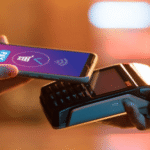In an age where technology quietly reshapes our daily habits, the smart wallet stands as a perfect example of innovation meeting practicality. The traditional wallet, once a simple leather pouch for cash and cards, has evolved into a digital hub designed for security, efficiency, and seamless connectivity. A smart wallet is a modern device equipped with Bluetooth tracking, RFID-blocking, and even wireless charging features, ensuring your money and identity remain secure. For consumers seeking both sophistication and protection, it’s not just an accessory—it’s an intelligent companion. The intent behind this evolution is simple: to merge digital intelligence with everyday necessity. As the world moves toward cashless systems, a smart wallet offers a bridge between the physical and virtual financial space, ensuring that the user’s essentials are safe, organized, and accessible with just a tap or a voice command.
The demand for smart wallets has surged as users become more aware of digital theft, card skimming, and personal data breaches. What makes the smart wallet appealing is not merely its technological sophistication but its human-centered design. From automatically locking compartments to app-based location tracking, it represents convenience shaped by innovation. According to designers, the inspiration behind these products lies in one idea: simplicity with intelligence. As one product engineer noted, “The future of personal accessories will lie in how seamlessly they integrate with human intent.” This perspective underscores how innovation isn’t about complexity—it’s about thoughtful design enhancing daily life.
What Is a Smart Wallet?
A smart wallet is a next-generation wallet integrated with technology to improve user security, accessibility, and functionality. Unlike traditional wallets that focus solely on material and craftsmanship, smart wallets embed tech components such as Bluetooth modules, rechargeable batteries, GPS trackers, and RFID protection layers. The goal is to create a product that ensures your wallet can never be lost, your cards are protected from skimmers, and your essentials are always organized intelligently. Many models now sync directly with mobile apps, allowing users to track their wallet’s last known location or receive alerts if they leave it behind.
The smart wallet concept extends beyond mere gadgetry—it represents the intersection of personal identity and digital technology. Consumers today expect products to be responsive, interactive, and secure. By merging traditional wallet aesthetics with connected technology, manufacturers have created something that fits into both business meetings and digital ecosystems. This dual role defines the wallet of the future: a tech-driven yet fashion-conscious product built for modern mobility.
Key Features That Define Smart Wallets
Smart wallets are not defined by one feature but by an ecosystem of interconnected technologies working in harmony. RFID-blocking is among the most essential features, designed to prevent unauthorized scanning of credit and debit cards. Many also feature built-in GPS or Bluetooth tracking, often compatible with mobile platforms like Apple’s Find My or Android’s Find Device network. Other high-end versions integrate fingerprint sensors or facial recognition locks, ensuring only the owner can access the contents.
Some smart wallets come with solar or USB-C charging ports to keep internal modules powered for weeks. Others support wireless charging pads, catering to the environmentally conscious user. Additionally, mobile alerts and motion sensors allow users to know if their wallet is moved unexpectedly. This evolution showcases how utility, design, and protection can coexist. In the words of an industry analyst, “A wallet that thinks for you is not luxury—it’s the new standard of living.”
Table 1: Core Technologies Found in Smart Wallets
| Feature | Function | Benefit to User |
|---|---|---|
| RFID Blocking | Prevents electronic theft | Protects card data from scanners |
| GPS/Bluetooth Tracking | Syncs with mobile apps | Helps locate lost wallet |
| Biometric Lock | Uses fingerprint/facial ID | Prevents unauthorized access |
| Solar/Wireless Charging | Powers smart modules | Ensures long battery life |
| Mobile Alerts | Sends notifications | Prevents misplacement |
The Design Evolution of the Smart Wallet
While technology defines its intelligence, craftsmanship defines the smart wallet’s personality. Early models were bulky and plastic-heavy, catering primarily to tech enthusiasts. However, contemporary designs blend premium leather, recycled materials, and slim aesthetics. The shift toward sustainable and minimalistic craftsmanship shows that functionality doesn’t have to compromise fashion. Many luxury brands now collaborate with tech firms to design wallets that maintain elegance while embedding advanced components.
This shift has created a new market niche where design sophistication and digital protection coexist. Consumers today expect technology that complements their lifestyle—not dominates it. The modern smart wallet thus reflects a cultural change in how we perceive accessories: as tools for empowerment rather than possessions of status.
The Security Advantage of Smart Wallets
Security remains the primary motivator for adopting a smart wallet. In an era where digital theft is as concerning as physical theft, smart wallets are designed to tackle both. RFID-blocking layers shield your cards from hidden scanners that can steal your financial information. Meanwhile, GPS-enabled models provide peace of mind by allowing instant location tracking. If misplaced, users can simply ring their wallet using a connected app or even activate an SOS alarm built within.
These features redefine personal safety. Gone are the days when losing a wallet meant panic and permanent loss. Smart wallets give users agency and immediate control over their valuables. For frequent travelers, this feature is invaluable. A single alert can prevent hours of anxiety or financial damage.
Table 2: Comparison Between Traditional and Smart Wallets
| Category | Traditional Wallet | Smart Wallet |
|---|---|---|
| Material | Leather or fabric | Leather, metal, tech-infused materials |
| Security | Vulnerable to theft | RFID and biometric protection |
| Tracking | None | GPS or Bluetooth-enabled |
| Power Source | None | Battery or solar-powered |
| Accessibility | Manual use | App-integrated, alert-based |
The Integration of Smart Wallets in a Cashless Society
As nations shift toward digital payments, the smart wallet plays a crucial role in bridging old habits and new technologies. It allows users to store essential cards while also managing digital tokens, QR codes, and virtual credentials. Some models even include NFC (Near Field Communication) capabilities, enabling direct payment from the wallet itself. This feature is revolutionary for professionals who prefer to travel light without depending entirely on smartphones.
The rise of contactless transactions also amplifies the wallet’s relevance. By storing both physical and digital credentials securely, smart wallets ensure that individuals maintain financial autonomy even if their smartphone battery dies. It’s the digital safety net for a cashless generation.
Consumer Experience and Usability
Usability defines a smart wallet’s success. The integration of apps allows users to customize alerts, monitor power levels, and view location history. The best designs ensure that technology remains subtle—serving the user rather than overwhelming them. The tactile experience still matters; hence, many manufacturers focus on premium finishes, such as Italian leather or aircraft-grade aluminum. These details make smart wallets both desirable and dependable.
Customer reviews frequently highlight peace of mind as the main satisfaction driver. Knowing that a misplaced wallet can be instantly located transforms the experience from stress to confidence. That emotional assurance adds intangible value to the purchase—something traditional wallets can’t offer.
The Role of Artificial Intelligence and Connectivity
AI integration is the next frontier in smart wallets. Future designs are expected to learn user behavior—predicting when you might leave your wallet behind or automatically locking it when suspicious movement is detected. Through AI-driven personalization, wallets can adapt notifications, optimize battery usage, and even sync with other wearable devices. Imagine a wallet that reminds you when your ID is missing before a flight or suggests budgeting patterns through an AI app companion.
These possibilities illustrate that smart wallets aren’t static innovations; they’re evolving ecosystems. As one futurist observed, “The most powerful devices are those that quietly anticipate human error.” That philosophy defines the essence of intelligent accessories in the coming decade.
Environmental Impact and Sustainable Design
Environmental consciousness has also entered the smart wallet industry. Many brands now utilize recycled leather, plant-based fabrics, or biodegradable metals for casings. Solar charging features minimize energy waste, aligning the product with sustainable tech initiatives. This convergence of eco-responsibility and innovation appeals to a generation of mindful consumers who value products that reflect their ethics.
Manufacturers are now adopting circular economy principles—designing wallets that can be repaired, upgraded, or recycled. It’s not just about making smarter wallets; it’s about making responsible ones. As the tech industry grapples with e-waste, such thoughtful engineering is a step toward long-term sustainability.
Market Trends and Consumer Adoption
The global demand for smart wallets is expanding rapidly, driven by urban professionals, digital nomads, and frequent travelers. Younger consumers especially see it as an investment in personal safety and lifestyle integration. Analysts predict that as technology costs decrease, smart wallets will become as common as smartphones. The fusion of utility, minimalism, and digital trust creates a powerful formula for adoption.
Even traditional fashion houses are entering the market, combining artisanal skill with embedded sensors. This hybridization signals a new era where fashion and technology are no longer separate industries but collaborative forces shaping everyday life.
Future Outlook of Smart Wallets
The future of the smart wallet lies in complete digital integration. Imagine a single device managing cryptocurrencies, car keys, and identity documents securely through blockchain encryption. With IoT (Internet of Things) connectivity, smart wallets may soon interact with cars, home systems, and payment terminals autonomously. As these technologies mature, the wallet will transcend its current form to become a digital identity hub.
Over time, this innovation could replace multiple personal items—keys, cards, and IDs—into one encrypted ecosystem. This progression is not only technological but philosophical: it redefines ownership, convenience, and trust in the digital age.
Expert Insights
Designers and technology experts agree that smart wallets represent more than convenience—they symbolize a shift in how humans manage personal space in a digital landscape. A prominent designer once stated, “A smart wallet is not just an object; it’s a promise of control in an uncontrolled world.” This sentiment captures the emotional undercurrent driving the product’s appeal.
Conclusion
The smart wallet encapsulates a modern paradox—simplicity enabled by complexity. It replaces anxiety with assurance, clutter with organization, and vulnerability with intelligence. As the world accelerates toward digital and contactless interactions, the smart wallet stands at the intersection of technology and identity. It reminds us that innovation, at its best, should enhance our humanity, not replace it.
In the next decade, we can expect these wallets to evolve further, integrating AI, blockchain, and sustainability to shape the future of financial interaction. They are not mere tools—they’re companions of trust, crafted to adapt to our lives. Just as watches once became smart to reflect time’s essence, wallets have become smart to reflect our values of security, connectivity, and simplicity. The journey of the smart wallet, from a humble pocket item to a digital guardian, reflects our collective pursuit of a life where technology quietly works in our favor.
FAQs
1. What is a smart wallet?
A smart wallet is a tech-enhanced wallet that integrates features like Bluetooth tracking, RFID-blocking, and app connectivity to improve security and accessibility.
2. How does a smart wallet prevent theft?
It uses RFID-blocking layers to shield cards from electronic skimming and GPS or Bluetooth tracking to locate misplaced wallets.
3. Are smart wallets compatible with mobile devices?
Yes, most models connect via dedicated apps on iOS or Android, allowing alerts, battery monitoring, and real-time location tracking.
4. Can smart wallets hold cash and coins like traditional wallets?
Yes, though designs are sleeker, most smart wallets include compartments for essential cash, cards, and small items.
5. How long does a smart wallet battery last?
Depending on the model, battery life can range from several weeks to months, with solar or wireless charging options for sustainability.











